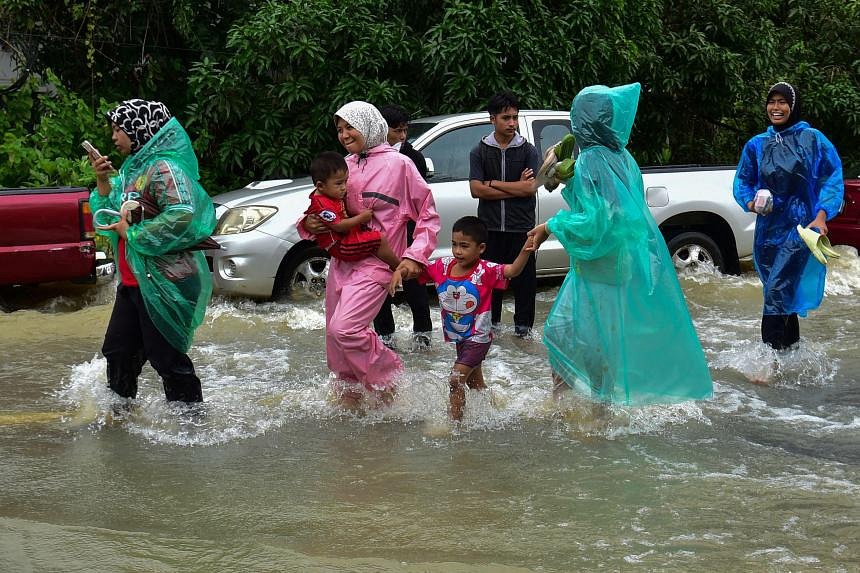BANGKOK – Floods in southern Thailand have killed at least six people and affected tens of thousands of households, the authorities said on Dec 27.
The floods, which began on Dec 22, have hit more than 70,000 homes across the provinces of Satun, Songkhla, Pattani, Yala and Narathiwat, regional officials said.
Six people, including an 89-year-old woman and a toddler, were killed in Narathiwat, deputy provincial governor Preecha Nualnoi said.
Another person was still missing following days of intense rain, which sparked flood waters that reached around 3m in height in some places, he added.
Local media footage showed streets submerged by the muddy deluge and residents taking refuge on rooftops.
Relief teams worked by night to hand out bottled water and snacks, as well as check buildings for damage or casualties.
Thailand’s Department of Disaster Prevention and Mitigation said the water level had reduced on the morning of Dec 27.
Some rail services in Narathiwat province, which borders Malaysia, resumed following days of closure due to track subsidence, Mr Preecha said.
Thailand’s Public Health Ministry is closely monitoring the flood situation, said Public Health Minister Cholnan Srikaew.
Dr Cholnan on Dec 26 said 12 healthcare facilities across Narathiwat and Yala provinces were affected by the floods. Out of these, 10 facilities remain closed.
His ministry has established emergency medical and public health operation centres in Yala and Narathiwat.
“We are fully prepared to provide assistance and care to the affected people, particularly chronic patients and bedridden individuals, ensuring continuous medical attention. We are also vigilant about diseases and health hazards associated with flooding,” Dr Cholnan said.
The minister further added that pre-emptive measures involve instructing provincial health officers and facility managers to prepare medication and medical supplies, set up medical response teams, as well as devise comprehensive contingency plans both before and during such calamities.
Post-disaster rapid assessments will evaluate damage to healthcare facilities, especially those closed or partially operational.
Vigilance for diseases resulting from stagnant flood waters and monitoring the mental health recovery of affected individuals for severe stress, post-traumatic stress disorder, depression and anxiety will be prioritised.
The kingdom’s rainy season typically brings months of daily deluges, but scientists say man-made climate change can make rainfall more intense.
In 2011, widespread flooding killed hundreds and damaged millions of homes around the country. AFP, THE NATION/ASIA NEWS NETWORK

